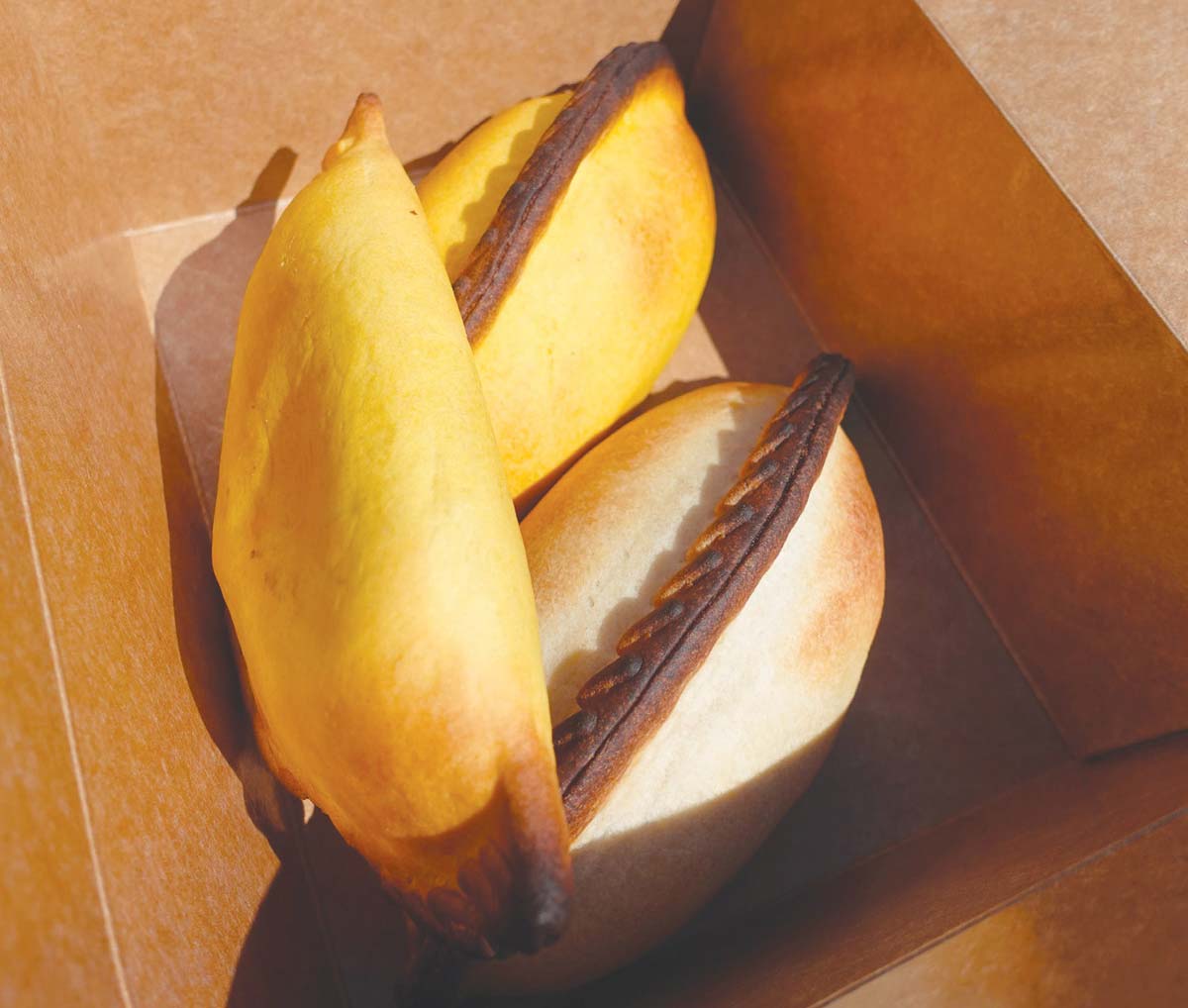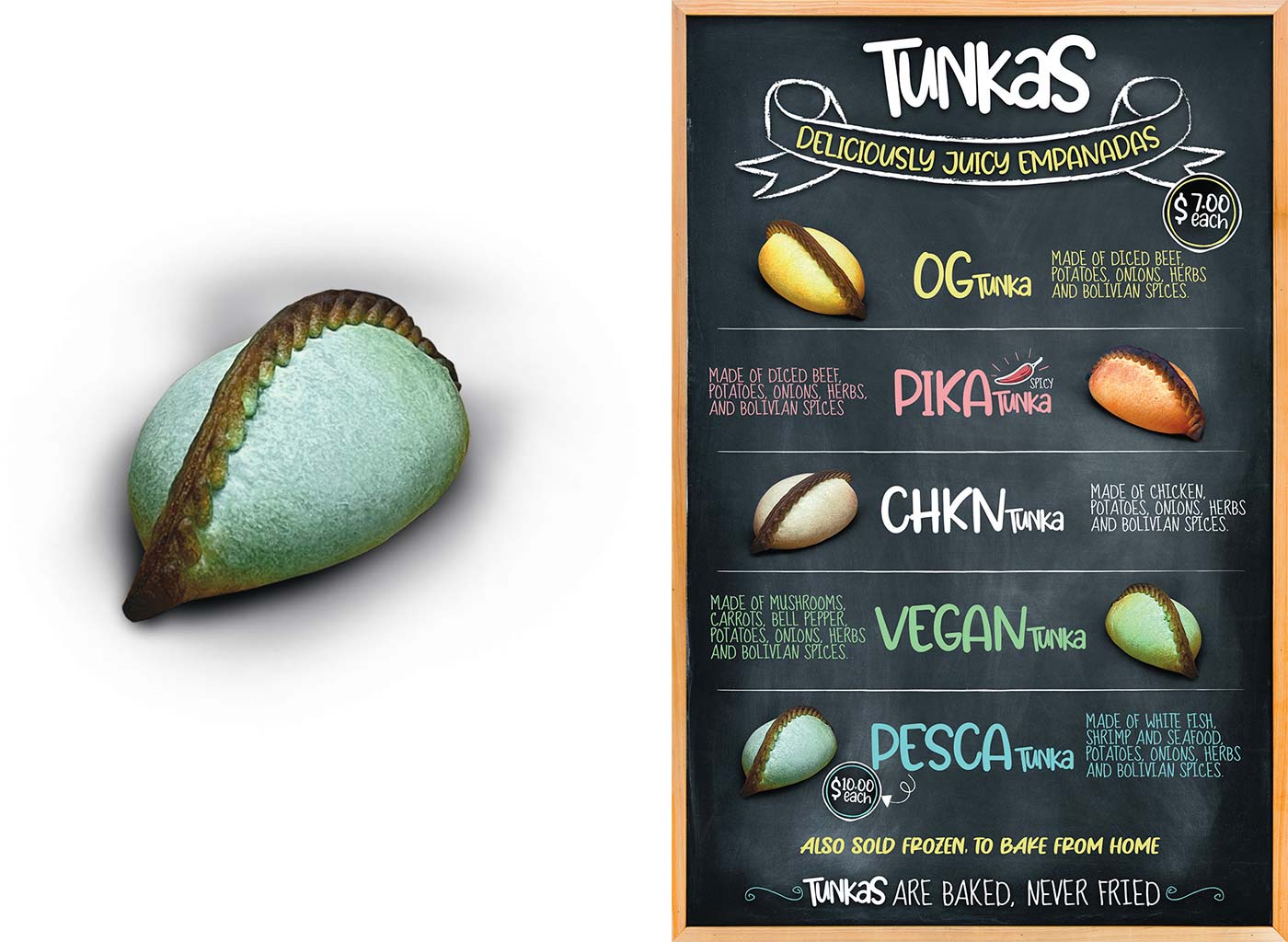Savoring Salteñas

From the lush green rainforest canopy in the Amazon to the turquoise lakes and crystalline glaciers of Patagonia, South America is known for its immense beauty. It is also known for its food, and hungry travelers will certainly come across the ubiquitous South American street food of choice: the empanada.
Derived from the Spanish word empanar, meaning “to cover with breading,” empanadas are a baked or fried pastry filled with meat, cheese, beans, or just about anything a cook may have on hand. They are a variation of the universal culinary tradition of the dumpling, in which a dough of flour, corn, or potato is formed around a filling. From Nepali momos to Polish pierogies to Chinese baozi, dumplings are a portable, usually affordable, and delicious way to fill one’s stomach. Similar in concept, empanadas are well known throughout the world due in large part to the dispersion of Latin American immigrants across all continents.
Lesser known, however, is the unique Bolivian variation of the empanada: the salteña. Rooftop at Exchange Place
The somewhat murky origins of salteñas take us over the Bolivian border to the Argentinian city of Salta in the Lerma Valley of the Andes mountains. According to the Bolivian historian Antonio Paredes Candia (whose claim has been subject to dispute), Juana Manuela Gorriti, an Argentine feminist and writer, should be credited as the inventor of the salteña. At a young age, Gorriti and her family were exiled to the Bolivian border town of Tarija when the Argentine dictator Juan Manuel de Rosas used political oppression to crack down on indigenous families and political dissenters. She initially sold her Bolivian empanadas to support her impoverished family, but over time her unique variations grew in popularity, and customers came to seek out food from the lady from Salta. (Gorriti later married then Bolivian president Manuel Isidoro Belzu, but returned to Argentina when the two eventually divorced.)
Salteñas share the traditional half-moon shape of empanadas; the most notable difference is in the juicy filling, which is more of a soup or a stew, comprised of beef or chicken with potatoes, olives, and/or raisins, immersed in a broth that is served either picante (spicy) or dulce (sweet). The savory filling marries beautifully with the sweetness in the dough.
Salteñas are primarily eaten as a mid-morning snack and are enjoyed by the full spectrum of Bolivian society, from businessmen in three-piece suits to indigenous street vendors who sell knitted clothing on tree-lined sidewalks.
The central plaza of every Bolivian city or town has sellers hawking salteñas in the midmorning hours from small-batch food carts to the large bakeries where they are displayed alongside other Bolivian baked goods. Since making salteñas is a difficult, labor-intensive process, they are rarely made in family homes, making the snack an almost exclusively street food option. While well known and loved throughout Bolivia, salteñas are not easy to find in the United States, due to the time-consuming nature of their construction as well as the small Bolivian diaspora imprint here relative to other South American countries.
Dany Caballero and Sonia Gallardo decided to change that reality in 2022, when they created Tunkas, a New Jersey–based, family-run food truck that brings delicious salteñas to farmers’ markets, fairs, and customers’ home freezers. Caballero makes the salteñas and Gallardo runs the business. The name Tunkas translates to “ten” in the indigenous Aymara language, representing the families’ love of fútbol (the number 10 is worn by many teams’ star players). Tunkas markets their salteñas as empanadas in name, due to the American market’s lack of familiarity with the product and the diversity of their customer base. They aren’t catering solely to Bolivian Americans.

Sonia Gallardo and Dany Caballero of Tunkas
SALTEÑAS SHARE THE TRADITIONAL HALF-MOON SHAPE OF EMPANADAS; THE MOST NOTABLE DIFFERENCE IS IN THE JUICY FILLING, WHICH IS MORE OF A SOUP OR A STEW.
Caballero started making salteñas in his home kitchen in 2018 because he missed the national dish of his homeland. A native of La Paz, he had longed for the familiar tastes of home ever since he left La Paz for New York with Gallardo in 2012. Gallardo, who hails from Queens, lived for a time in both Los Angeles and Bolivia and is the cousin of Caballero’s best friend. The two soon married and eventually moved to New Jersey from New York in 2020 when the Covid pandemic hit.
At first, Caballero, a self-taught cook with no formal culinary training, made salteñas for his family without any intention of selling them outside the home. In his past life, Caballero had run a photography firm in Bolivia and his talents led to him working as President Evo Morales’ personal photographer, accompanying Morales on the president’s plane to overseas conferences as well as a wide variety of domestic appointments. Though he often ate with the president and his officials, including a memorable meal where Morales coaxed the photographer into joining him for a full goat head meal, Caballero had not considered a life in the food industry. It wasn’t until he began to perfect his homemade salteñas and increased the volume he made for family and friends that he considered selling them to American customers.
Those who master the craft of salteña making are referred to as salteñeros. They are often male sous chefs who spend their days crafting the twisted braids that run along the spine of the salteñas, giving them their signature look while also forming the all-important seal that keeps the juicy filling inside. It is a time-consuming, delicate artform that takes many attempts to perfect. Though he is the head of the cooking operation for Tunkas, Caballero does not consider himself a salteñero because he has a team that helps him assemble the pastries.
When making salteñas, the filling is cooked first and then cooled. Raw dough is formed from flour, sugar, and salt, filled with the cooled broth, and then tightly sealed so it does not separate upon baking.
In his first year, Caballero made many mistakes. He realized quickly that if the dough is stretched too thin, the salteñas will leak out in the oven. If they are cooked too long or at a temperature that is too high, they will burst, splattering boiling juice all over the oven. Pulled too quickly from the oven, an undercooked salteña will have a cold, somewhat gelatinous filling. Through trial and error, frustrations and successes, and small burns from exploding filling, Caballero improved his craft. When asked about his secret for perfecting a salteña’s form, Caballero now responds like a true maestro:
“You have to understand the dough,” he explains. “Humidity, temperature, and season of the year affect a dough’s nature. You can tell what it needs by the dough’s texture, by the feel.” Dough formed in the high altitude of Bolivia’s capital, La Paz, will act much different from dough made in Jersey City, which is essentially at sea level. And dough certainly can’t be bought pre-made from a market. There is no corner-cutting in the two-day process it takes to make salteñas.

THE RULES AND REGULATIONS FOR OPERATING A FOOD TRUCK CAN BE COMPLICATED AND CONFUSING, BUT THE COUPLE FORTUNATELY LEARNED QUICKLY FROM FRIENDLY FOOD TRUCK OPERATORS WILLING TO SHARE INFORMATION.

When Caballero and Gallardo were planning their business, a food truck seemed a smaller investment than a brick-and-mortar shop. Despite the recent rise in the number of food trucks across New Jersey as well as the launch of the New Jersey Food Truck Association, however, there is a dearth of education and resources available for prospective food truck operators and patrons. The rules and regulations for operating a food truck can be complicated and confusing, but the couple fortunately learned quickly from friendly food truck operators willing to share information.
Tunkas is on the road most of the year, selling salteñas at New Jersey farmers’ markets and local events three or four days each week. Caballero spends the rest of the week in the kitchen cooking and restocking their supply while Gallardo works in the office. Business has grown and Tunkas is gaining recognition. In early 2023, Tunkas took home first place at the Northern New Jersey Empanada Festival, earning a championship-wrestling-style belt that adorns their truck.
And what makes Tunkas especially unique are seafood options in addition to the traditional beef and chicken varieties. While living for two years in Chile, a country with ample seafood, Gallardo acquired a taste for the ocean. Realizing the American palate’s similar affinity for seafood, Caballero crafted a delicious filling that tastes like a fisherman’s stew packed into a warm crust. Pesca Tunka is filled with white fish, shrimp, potatoes, onions, herbs, and spices. Similarly, Tunkas’ lobster option is packed with thick pieces of the shellfish—a scarce ingredient in landlocked Bolivia, whose main seafood offering is trucha (trout) from Lake Titicaca.
Although Tunkas currently lives out of a food truck, it’s the product, not the truck, that is central to Caballero and Gallardo’s business plan. Salteñas can be sold in cafés, local shops, and even grocery freezers. Frozen salteñas take just 20 minutes to bake in an oven, so businesses don’t need a full kitchen, just a freezer and an oven. Establishing a baked goods store is in Caballero and Gallardo’s five-year plan, but eventually they hope to expand even further, through franchising or large-scale production for grocery chains.
Lucky enough to find yourself with Tunkas salteña in hand, but not sure how to dig in? Gallardo often leans out of the food truck window at farmers’ markets to instruct customers on the art of eating a salteña. Holding the salteña vertically, she demonstrates: Bite an opening from the top. Drink the soup first. Then, fill up on New Jersey’s next big thing.
Tunkas is onsite at numerous farmers’ markets and festivals across northern New Jersey, including in Hoboken, Jersey City, South Orange, and Union. Follow them on social media for location updates this winter.




